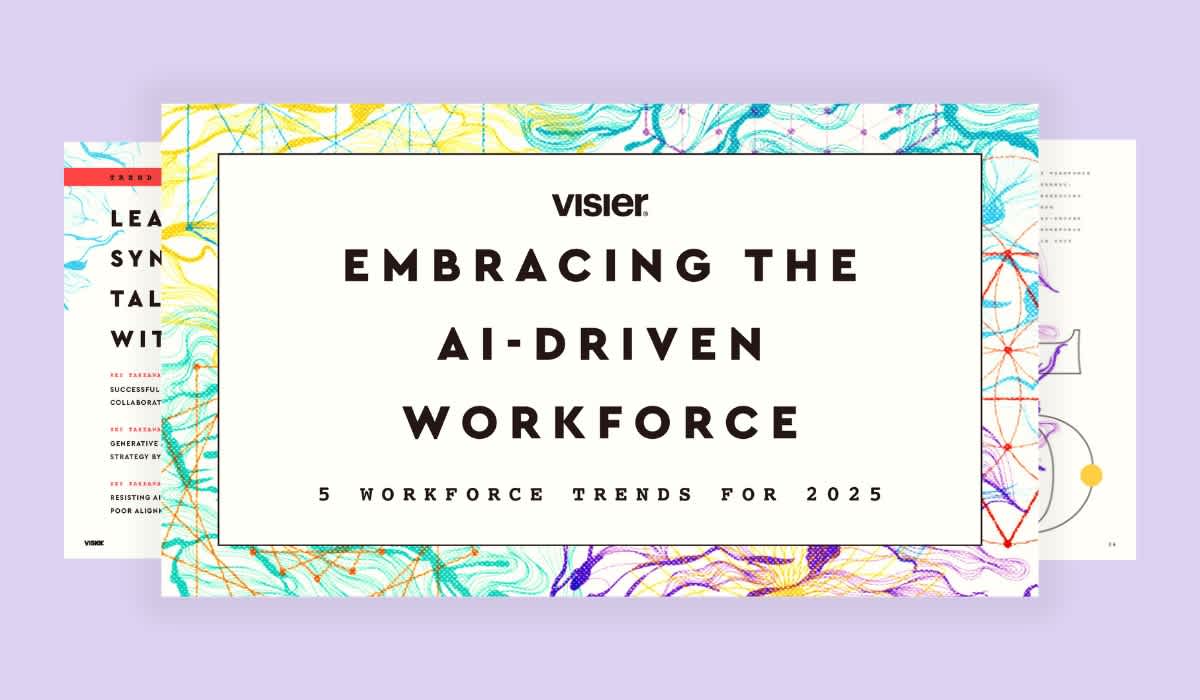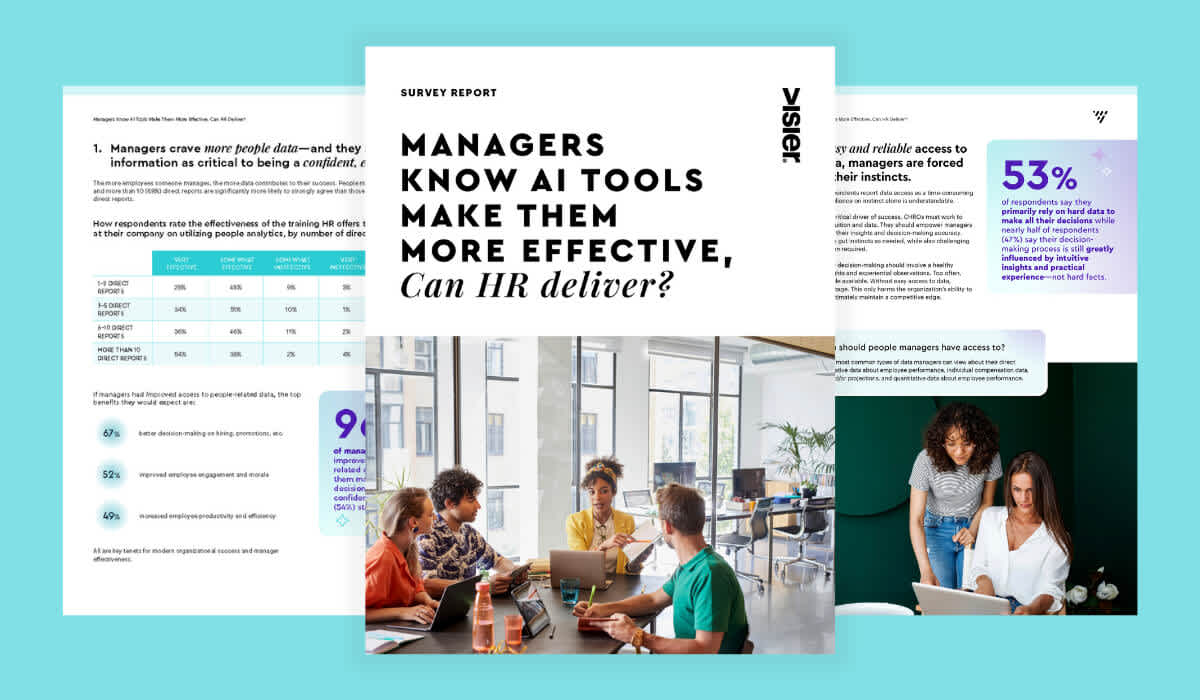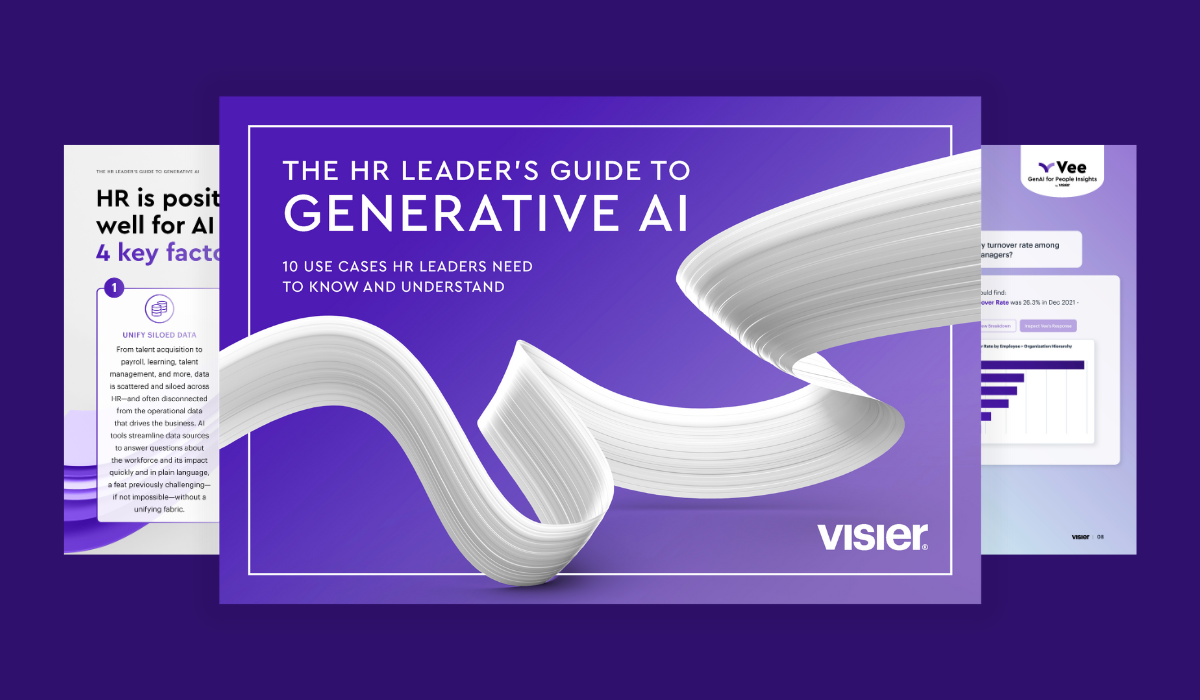GenAI May Not Replace Jobs, But It Will Replace Skills So Get Ready
To effectively reskill the workforce and make the right learning investments, employers need to forecast future skills requirements within the context of their business and the GenAI revolution.
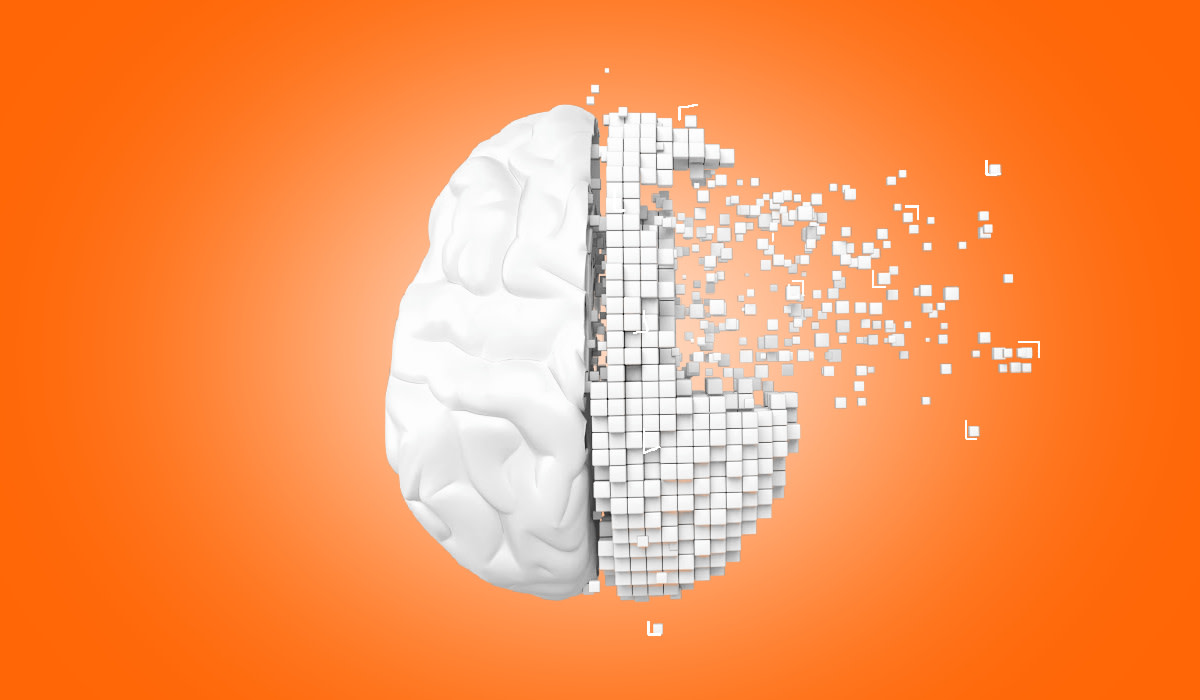
When IKEA started using an AI agent to handle common customer service queries in 2021, the move could have posed a major problem for the human workers who were displaced by the bot.
But instead of conducting widespread layoffs, the company opted to retrain and redeploy more than 8,500 call center employees to work as interior design advisers. This internal mobility push is part of a longer-term strategy to increase sales among Gen Z buyers.
If more employers start taking this kind of approach, where employability is prioritized in a strategic way through periods of technological disruption, they could help ease worker anxieties about automation.
Indeed, experts are making bold predictions about generative AI’s impact across all industry sectors, and fears about AI disruption are widespread: According to a global employee survey conducted by Visier with more than 3,000 respondents in the US, UK, and Germany, 51% of all respondents said they were genuinely concerned that the skills they currently have could be at risk of being replaced by AI.
While AI did contribute to nearly 4,000 US job losses in May 2023 according to Challenger, Gray & Christmas data, IKEA’s story demonstrates that wholesale automation is not an inevitability.
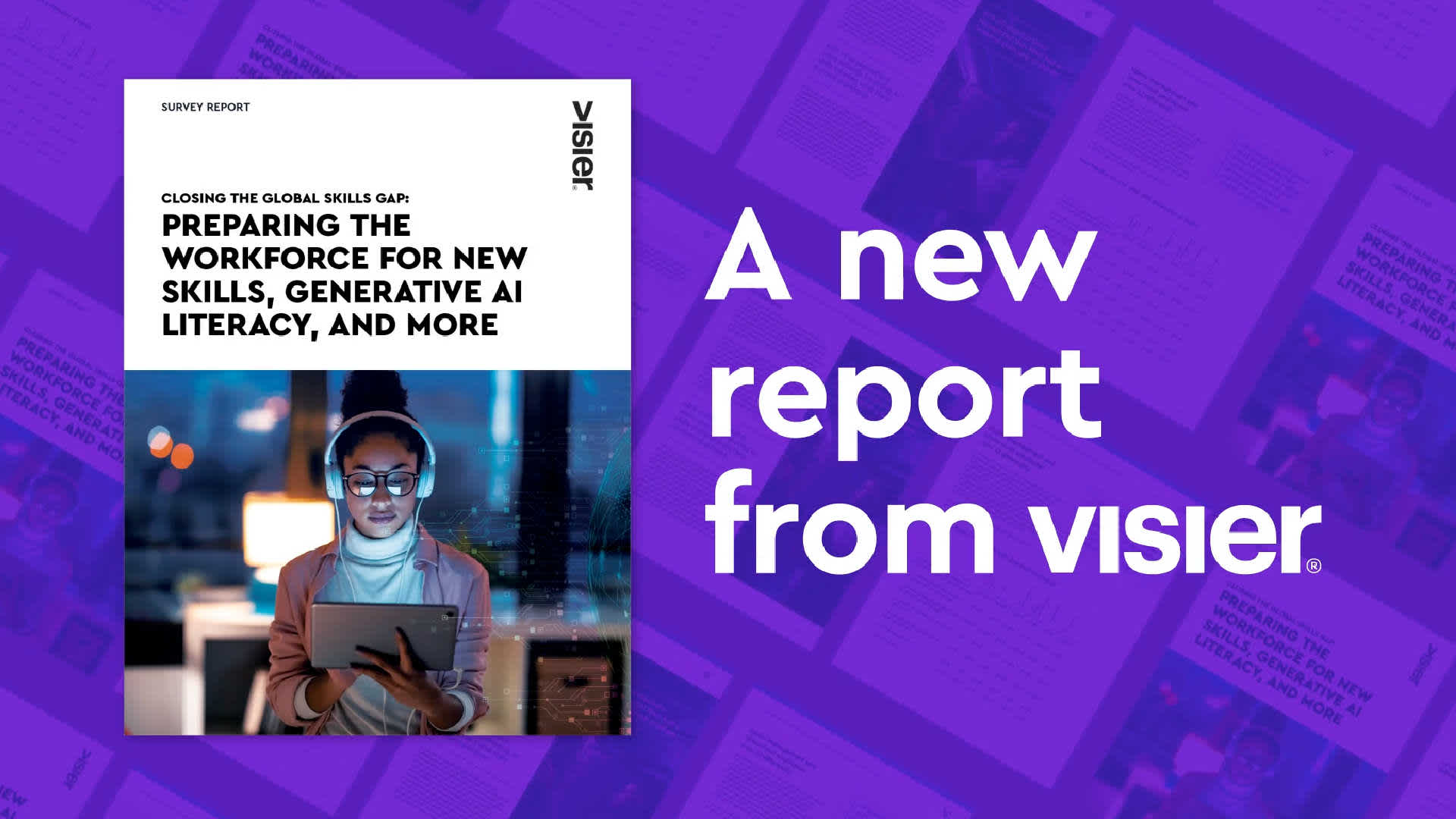
GenAI could replace up to half the tasks of certain occupations
If history is any indicator, as more organizations leverage GenAI to support new business strategies, become more efficient, and stay ahead of competitors, some jobs will disappear and new ones will be created. But jobs requiring non-repetitive manual dexterity, such as construction work, will likely be insulated from automation for the foreseeable future.
Jobs that fall within the category of higher-skilled white-collar work won’t be eliminated entirely, but will still be radically transformed. As this BBC article reports, humans will likely remain in roles requiring strategy design (such as business consulting)—and these roles aren’t immune to AI’s impacts.
“In many cases, there’s no immediate threat to jobs, but tasks [emphasis added] will change,” Joanne Song McLaughlin, associate professor of labor economics at the University of Buffalo, told the BBC.
A Goldman Sachs report released in March 2023 backs this up: According to the report, AI is likely to transform two-thirds of jobs in the US and Europe. These occupations are comprised of between 25% and 50% of tasks that could be replaced by AI. Between 2030 and 2060, half of today's work activities could be automated, according to a McKinsey report.

Successful organizations will understand how AI and people best work together
To help their people adapt, leading companies focus on upskilling (training employees to perform new roles) and reskilling (training employees to perform their current roles better).
Many people expect no less: 86% of employees expect their employer to take at least some role in reskilling to ensure they aren’t easily replaced by AI tools, according to a Visier survey, with 63% saying it’s entirely the employer's responsibility.
While some individuals can effectively take charge of their own skills development, relying solely on employees to drive reskilling efforts is a risky proposition.
Employers who adopt a wait-and-see mindset to skills development might not be nimble enough to compete in the rapidly evolving AI-at-work landscape. In fact, 77% of business and HR executives believe that flexible skills deployment is critical to navigating future disruptions.
Instead of viewing humans and AI as an either-or scenario, then, future-focused employers are taking the lead and gaining insight into how people and machines can complement each other in achieving organizational goals.
3 things organizations must do now to prepare the workforce for AI
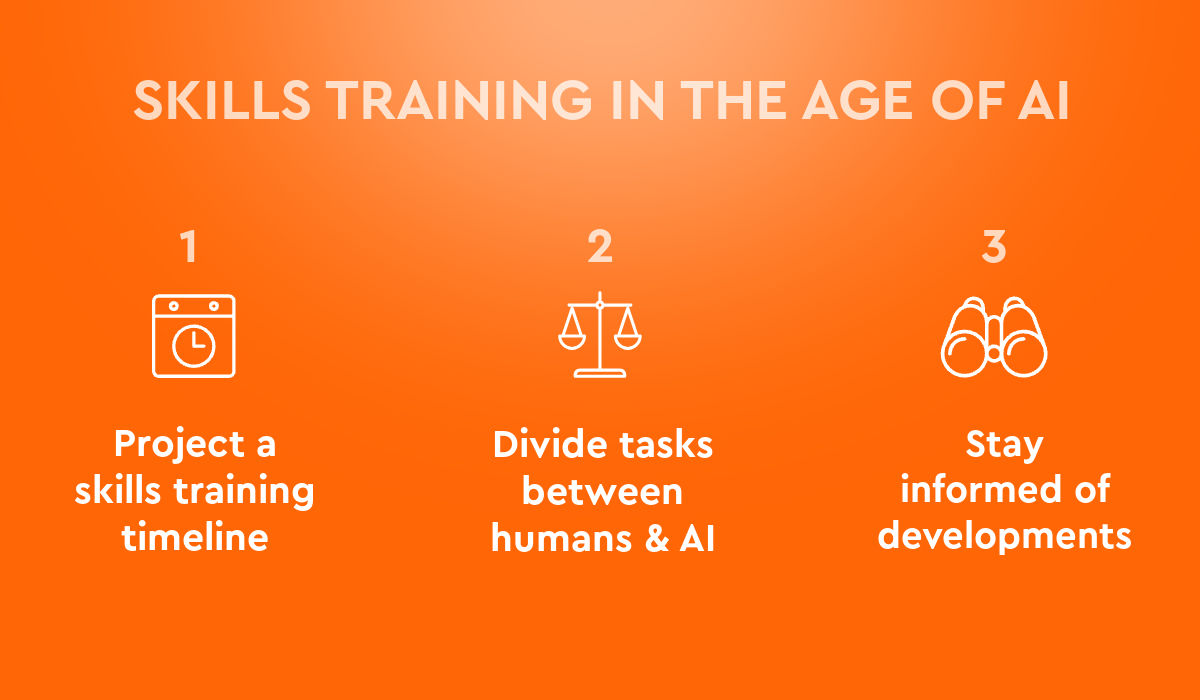
To effectively reskill the workforce and make the right learning investments, employers need to forecast future skills requirements within the context of their business. This involves anticipating which agent (human or AI) will be responsible for which tasks at certain points in time, and staying on top of new and developing GenAI capabilities.
1. Project a skills training timeline
A rush to adopt AI before its capabilities are mature enough to handle a particular function can have severe consequences. The tech news site CNET, for example, had to put a temporary pause on AI-generated content after it issued corrections on 41 of the 77 stories published by an AI tool.
On the other hand, leading companies can’t afford to wait too long to jump on the AI bandwagon, or they risk eating their competitor’s dust.
To further complicate matters, the predicted diffusion and development timelines for new AI capabilities are constantly shifting: As McKinsey noted in its report on generative AI, the firm’s recent estimate that half of today’s work activities could be automated between 2030 and 2060 is “roughly a decade earlier than in our previous estimates.”
2. Specify skills requirements based on what tasks humans can do that AI can't
Future skills requirements also need to be specific enough so that business leaders know where to make learning investments. In the past, many commentators pointed out that machines lack empathy, so people will never be comforted by a robot. And yet, some doctors are using ChatGPT to improve their bedside manner and deliver bad news to patients.
This means that, when developing the human skills required in the age of AI, organizations need to dig deeper into which specific elements of relationship-building can and cannot be automated.
3. Stay informed of rapid new developments in AI
Finally, because generative AI is being deployed as it is being refined, early skills people need for interacting with the preview version of ChatGPT might become less important in the near future. For example, developing effective prompts (instructions for the AI to follow) might fade away as a prominent skill for people who aren’t involved in AI tech development. A new generation of tools will allow people to get better results from clumsier prompts.
With each new leap forward in AI capability, business leaders will always be asking: What are machines good at and what are people good at? How can they work together to move the organization forward? It’s a puzzle that will continually need solving.

It is possible to plan ahead, even when the future is uncertain
While the recent pace of change has been dizzying, it’s important to remember that many experts are estimating that there is only a 50% chance that human-level AI will be reached by 2059. So for the foreseeable future at least, AI won’t be able to outperform humans at many tasks.
As business academic Oguz A. Acar states in this HBR post, an enduring skill for humans is “problem formulation”—the ability to “identify, analyze, and delineate problems.”
He argues that problem formulation “might prove to be as pivotal as learning programming languages was during the early days of computing.” Yet, 85% of C-suite executives consider their organizations to be poor at defining problems. It’s worth evaluating, then, whether this is an area that requires learning investments.
So while it’s difficult to predict with 100% certainty what the uptake in AI will look like long term, it’s critical to understand which required skills can’t be automated in the near future.
It’s also critical to thoroughly assess existing skill sets. By adopting a strategic approach to skills data, organizations can gain a comprehensive understanding of the current skills within their workforce. When the current reality is mapped against needs, a clear view of where the organization needs to put its energy into skills development emerges.
It’s up to employers to find out who has the right skills, and who needs to be trained to get those skills. To navigate the future disruptions brought about by AI, organizations need to embrace a culture of talent mobility and continuously address skills gaps.
The benefits are clear: Reskilling represents an opportunity for employees to enhance their capabilities and remain valuable assets to the company. From the employer's perspective, it also means human skills are not merely appreciated in hindsight—long after a hasty automation decision has been made.

